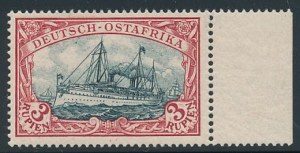
The great scramble for Africa in the late nineteenth century found the major European powers dividing up the continent into colonies for economic development. The Germans got into the game a bit later than Britain and for the most part their ventures in Africa were more for the political heft that it gave them than any economic gain. Actually, there were two extremely profitable Colonies-India, run by the British, and the Netherlands Indies (now Indonesia) run by the Dutch-but for the most part the colonies in Africa, no matter who the colonial administrator, were more problematic than profitable (Leopold’s brutal slave state in the Congo was the exception). The reason was that low population density, difficulties of transportation, and, once you got past the coast, disease made the interior largely uninhabitable for Europeans who had no natural immunity to any African diseases.
None of this stopped the intrepid Germans. In 1885, German East Africa became a chartered colony of the German Empire. Its area was what is now largely Tanzania along with parts of Ruanda-Urundi. From the beginning, German stamps were used in German East Africa and are identified by collectors only by their postmarks. The first unoverprinted set issued for German East Africa was in 1901. It was part of a general series that was used for all of the colonies called by collectors “Kaiser’s Yachts”. They are among the most popular stamps in all of philately, beautifully designed and usually found in very nice condition. Germany continued to administer German East Africa until World War I, after which this colony, as well as all of Germany’s other overseas possessions, were stripped away at Versailles.
